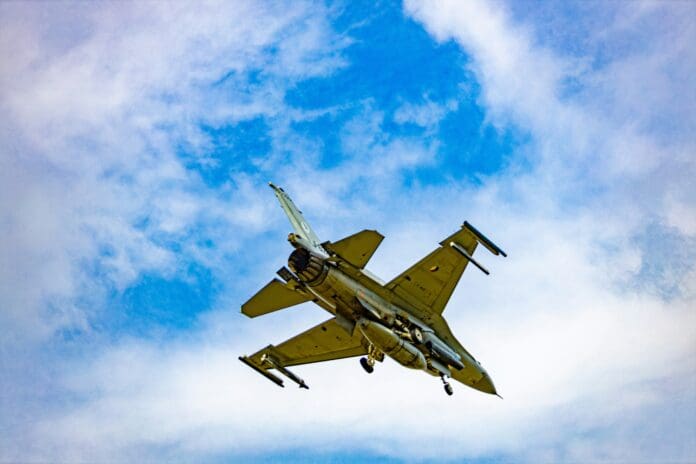This post is also available in:
 עברית (Hebrew)
עברית (Hebrew)
Top Aces, the exclusive commercial operator of F-16 aircraft dedicated to advanced air combat training, has unveiled an innovative AI-powered autonomous “constructive wingman” designed to enhance adversary air (ADAIR) training. In partnership with EpiSci, Coherent Technical Services Inc. (CTSi), and Seger Aviation LLC, Top Aces aims to provide an advanced solution for simulating complex adversary aircraft behavior during live-virtual-constructive (LVC) training exercises.
This new technology will allow training pilots to engage with a virtual AI wingman that mimics the flight characteristics and maneuvers of a sophisticated adversary aircraft. The system is seamlessly integrated into Top Aces’ F-16 Advanced Aggressor Fighters (AAF) via the Advanced Aggressor Mission System (AAMS). The AAMS architecture is equipped with a unique Hands-On Throttle and Stick (HOTAS) interface, enabling instructors and pilots to effectively coordinate wingman formations and tactics in real-time.
The constructive wingman solution provides several key advantages, particularly for Beyond Visual Range (BVR) targeting scenarios. By incorporating AI-driven units into training, Top Aces allows pilots to train against dynamic, agile adversaries, including 4th-generation fighter jets, all while reducing operational costs. Each AI wingman is portrayed as a Link-16 track, offering a significant increase in adversary units during BVR exercises, which are crucial for modern combat training.
Russ Quinn, President of Top Aces and a seasoned U.S. Air Force veteran, emphasized the importance of this technology for future air combat training. He explained that with AI-driven wingmen, more complex scenarios can be simulated, improving training effectiveness.
With operational testing nearing completion, Top Aces is poised to expand this initiative, setting a new standard in air combat training that could revolutionize how militaries worldwide prepare for the challenges of modern warfare.
This advancement in AI-driven training technology marks a significant step forward for the military aviation industry as a whole. By enhancing the realism and complexity of training exercises, this approach opens up new possibilities for preparing pilots to face the challenges of modern warfare in increasingly unpredictable combat environments. This breakthrough underscores the growing importance of innovation in military training systems.


























